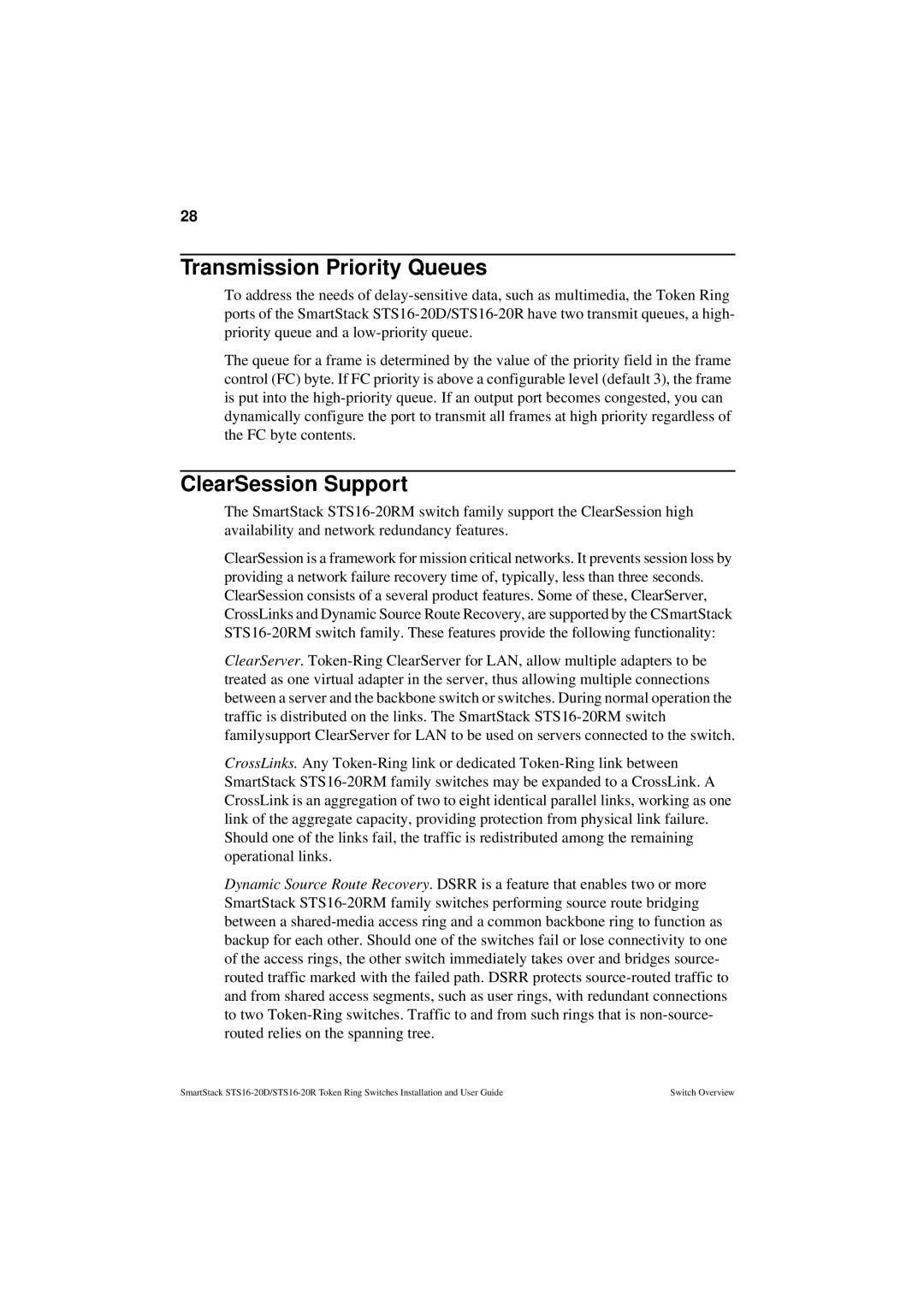
28
Transmission Priority Queues
To address the needs of
The queue for a frame is determined by the value of the priority field in the frame control (FC) byte. If FC priority is above a configurable level (default 3), the frame is put into the
ClearSession Support
The SmartStack
ClearSession is a framework for mission critical networks. It prevents session loss by providing a network failure recovery time of, typically, less than three seconds. ClearSession consists of a several product features. Some of these, ClearServer, CrossLinks and Dynamic Source Route Recovery, are supported by the CSmartStack
ClearServer.
CrossLinks. Any
Dynamic Source Route Recovery. DSRR is a feature that enables two or more SmartStack
SmartStack | Switch Overview |
